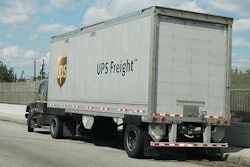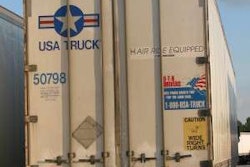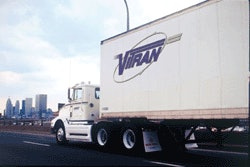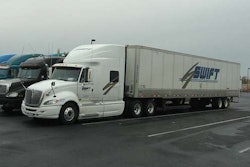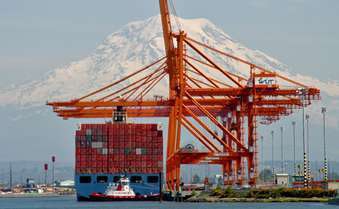
The Port of Tacoma posted progress in the second year of a regional cooperative effort to reduce port-related diesel and greenhouse gas emissions. The Northwest Ports Clean Air Strategy Implementation Report outlines progress by the port and its regional partners, the ports of Seattle and Vancouver, B.C., to meet jointly established short- and long-term clean air goals for ships, cargo-handling equipment, rail, trucks and harbor craft.
The goals were adopted in early 2008 as part of the Northwest Ports Clean Air Strategy. The implementation report calls out the annual progress achieved by all three ports through their cooperative relationships with customers, tenants, and air and environmental regulatory agencies.
At the Port of Tacoma, 70 percent of cargo-handling equipment met the 2010 goal of U.S. Environmental Protection Agency Tier 2 or Tier 3 engines running on ultra-low-sulfur diesel or biodiesel. State and federal grant-funded retrofits and replacements boosted this progress from 47 percent in 2008. All port-owned diesel equipment uses ULSD fuel or biodiesel blend.
Also, 90 percent of the drayage trucks serving the port met the 2010 goal of 1994 or newer model year emissions standards, up from 86 percent in 2008. The port actively promotes the 15 trucking companies that support the standards and will introduce a sticker program this fall that identifies individual trucks meeting the standards. The report also outlines efforts under way for 2010 and beyond to meet the more stringent 2015 standards.

